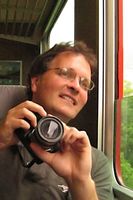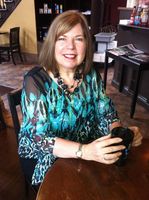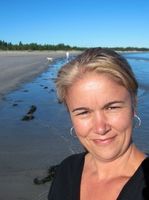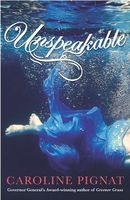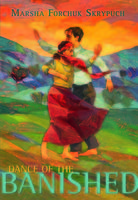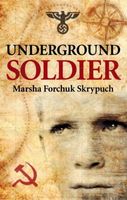Kid Lit Can, with Susan Hughes: Q and A with 2015 Geoffrey Bilson Award for Historical Fiction Nominees, Part II
By Susan Hughes & Submitted by kateburgess
Welcome! Today I continue my chat with the three terrific authors whose five books have been nominated for the CCBC Geoffrey Bilson Award for Historical Fiction for Young People: Patrick Bowman, Marsha Forchuk Skrypuch, and Caroline Pignant.
Susan Hughes:
Patrick, Marsha and Caroline, welcome back! Can you each tell me what you find most challenging when you write historical fiction for children?
Patrick Bowman:
Geez, where do I begin? Whittling down the universe of ideas for where your book might go. Putting your characters in peril. I mean, you don’t want to, they’re like friends, and besides, you have to get them out again. Trying to imagine how it will look to others. Avoiding things your character couldn’t possibly know.
For instance, at one point Alexi was going to describe something as being “like a sheet of ice”—okay, it’s a cliché, but more importantly, if you’ve lived all your life on the Mediterranean in 1200 BC, you wouldn’t even know what ice was.
Marsha Skrypuch:
Kids won’t read boring books so you need to write a complex and thrilling novel that starts with a bang and never lets up. And you need to leave out all the words that people tend to skip over.
Caroline Pignat:
Research can be a challenge. I usually crosscheck to ensure my facts are authentic. I’d hate to get something wrong. But even though facts are important, they are just the skeleton of the story. The body, the heart of a story, must come from the author.
The challenge for me, then, is to be just as authentic in feelings as in facts. It means being vulnerable, putting my fears, hopes and emotional self into the main character. That is what takes historical fact from “what happens when” to historical fiction “who is affected and how.”
SH:
Do you write exclusively in this genre—and exclusively for children?
PB:
The Odyssey of a Slave trilogy is the first thing I’ve written. I started with YA because I thought, stupidly, that it would be easier than writing for adults. It’s not! In YA, there are all sorts of things you can’t include—not just explicit sex, not that there’s much of that in The Odyssey, but adult plot complications that wouldn’t resonate with kids. The problem is really the parents. For example, I’ve included a bit more gore than some parents would like, because it was important to the setting, but it never bothers the kids.
MS:
I don’t intentionally write for any audience. I write for myself. Once a novel is done, my editor tells me who the audience is. With Underground Soldier, the audience turned out to be slightly older than the first two books in my WWII trilogy. For Dance of the Banished, the audience is age 12 to adult. Also, from reader feedback I know that I have a significant adult readership.
Your CanLit News
Subscribe to Open Book’s newsletter to get local book events, literary content, writing tips, and more in your inbox
CP:
I teach teenagers. I live with teenagers. My main characters are teenagers. And in many ways, I still am that 15 year-old girl inside. I still worry about being accepted, and included, and enough. Teenagers live in that fascinating stage of life: on the threshold of endings and firsts, in a constant flux between freedom and frustration, as they figure out who they are. Most of my work is historical, except for my first book (Egghead) and my next book (Shooter, May 2016) which are both set in contemporary high schools.
SH:
What is some advice that you’d give to writers—beginning or experienced—who are working on their first draft of a historical fiction manuscript for kids?
PB:
Hmm. Don’t be afraid to add details that aren’t in the historical (or in Homer’s case mythological) record. It took me a long time to come around to the idea that I could add things as long as I didn’t contradict the known record. You absolutely have to do that, though, because the historical record is so sparse and doesn’t tend to include people’s motivations or personal issues, which are the things that make a story come to life.
MS:
Respect your audience and never talk down. Don’t make it up, look it up: you owe it to your readers to be accurate. Leave your imagination open as you explore the archives. The story will reveal itself to you and it’s often much different than what you initially thought.
CP:
Do the research, obsessively. Be organized. Cite your sources as you go for when your editors asks for a fact check (because they will... and they should.) I use Scrivener as well as a good old-fashioned binder. Get enough facts for a solid skeleton and then focus on the heart of your story—the "so what." Show us why what happened in that time and place matters to your character, know why it matters to you—and you can bet that, as a result, it will matter to us.
SH:
Is there anything else you’d like to share with us?
PB:
There are two schools of thought about writing. School 1: plan your whole plot, subplots and so on, in advance. That way your book will have consistency and flow, and you won’t have to backtrack to retrofit things. School 2: just sit down and write. That way your book will have spontaneity because even you don’t know where it’s going.
Okay, I don’t actually know which way to pick. My natural inclination is option 1, but it doesn’t always work that well for me. I guess my advice is, know that there are those two options, and be relaxed with whichever you choose.
MS:
I’ll finish off with one writing tip: After you think you’ve done your masses of historical research, take one of your characters through a typical 24-hour day. For example, where they sleep, how they break their fast, where they go to the bathroom, what their underwear looks like (and how often they wash it—and wash where and with WHAT—or if they don’t wear it...), what they eat (or can’t), what their daily chores are and whom they encounter. It may seem like a tedious exercise but only once you’ve lived a full 24 hours in your character’s shoes (or bare feet) will you be able to write from that perspective.
CP:
I wrote Unspeakable and The Gospel Truth at the same time. Though they are very different, they both TERRIFIED me as I wrote because I was trying something new. I don’t like change. Or doubt. Or, worse, failing miserably. I do not like them, Sam I am.
But thanks to my editors and agent—who nudged me beyond that safe/familiar threshold—I played with plot, pacing, POVs and poetry and I was thrilled with the results. Even Shooter (May 2016) has evolved as a collage of voices, memories and media (journals, photos, articles, texting, homework and so on). Totally different—and I’m loving it.
New is scary. It’s unknown. And above all, it’s risky. But it’s worth it. Would you, could you with your work?
The views expressed by Open Book columnists are those held by the authors and do not necessarily reflect the views of Open Book.
Susan Hughes is an award-winning author of children's books — both fiction and non-fiction — including The Island Horse, Off to Class, Case Closed?, No Girls Allowed and Earth to Audrey. She is also an editor, journalist and manuscript evaluator. Susan lives in Toronto. Visit her website, www.susanhughes.ca.
